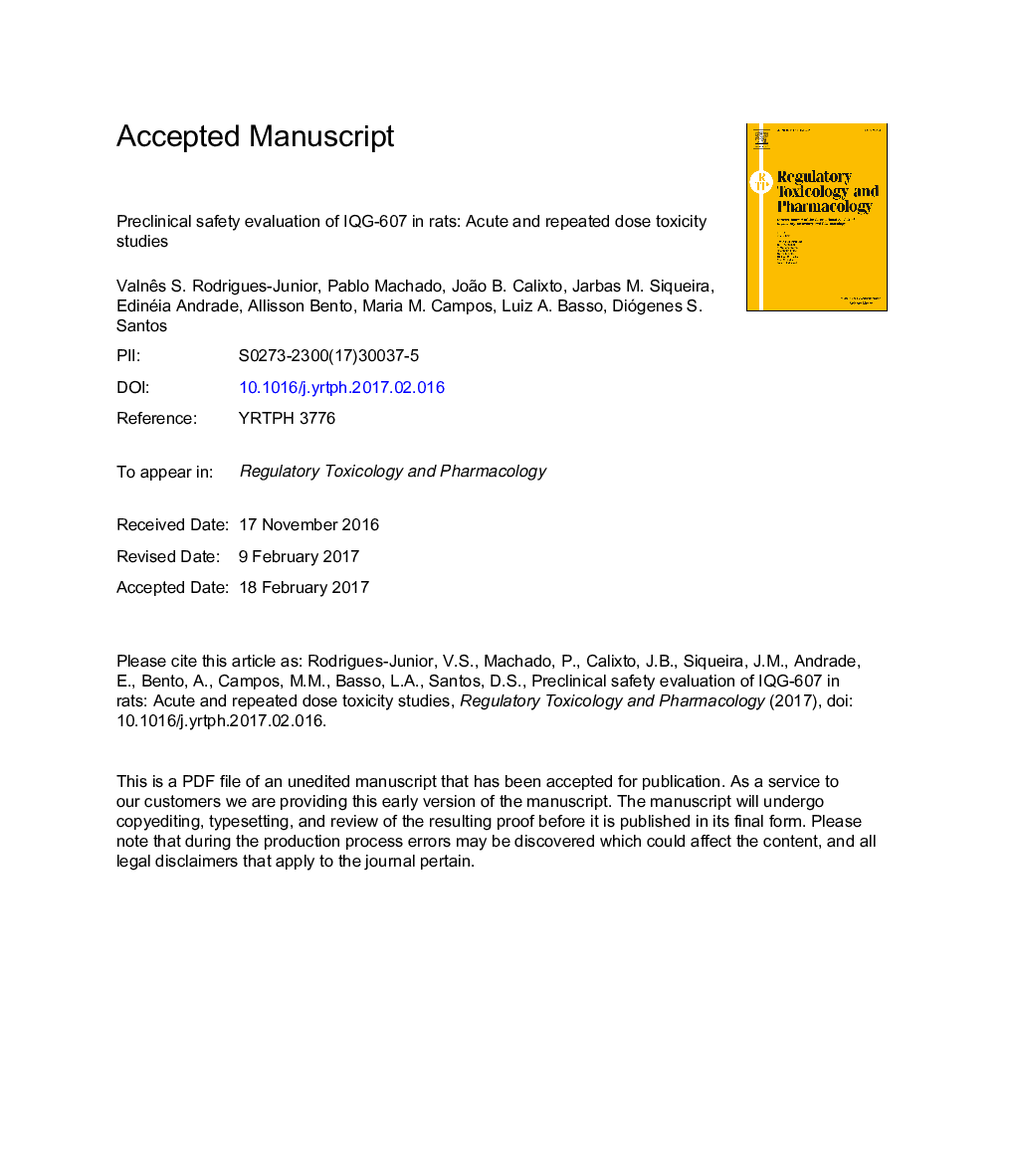| Article ID | Journal | Published Year | Pages | File Type |
|---|---|---|---|---|
| 5561246 | Regulatory Toxicology and Pharmacology | 2017 | 31 Pages |
Abstract
In the present study, we evaluated the safety and the possible toxic effects of IQG-607 after acute and 90-day repeated administrations in rats. Single oral administration of IQG-607 (300 or 2000Â mg/kg) on female rats did not result in any mortality. No gross lesions were observed in the animals at necropsy. Ninety-day administration test resulted in 20% of deaths, in both male and female rats administered with the highest dose of IQG-607, 300Â mg/kg. Repeated administration of the IQG 607 (25, 100 and 300Â mg/kg) did not result in any significant body mass alteration, or changes in food and water consumption. The most important clinical sign observed was salivation in both sexes. Importantly, long-term treatment with IQG-607 did not induce alterations in any hematological (for both sex) and serum biochemical (for female) parameters evaluated, even at the highest dose tested. Treatment of male rats with 100 or 300Â mg/kg of IQG-607 decreased total cholesterol levels, while animals treated with 100Â mg/kg also presented reduction on triglyceride levels. Of note, no treatment induced significant histopathological alterations in tissues of all organs and glands analyzed, even in that group that received the highest dose of IQG-607.
Related Topics
Life Sciences
Environmental Science
Health, Toxicology and Mutagenesis
Authors
Valnês S. Rodrigues-Junior, Pablo Machado, João B. Calixto, Jarbas M. Siqueira, Edinéia L. Andrade, Allisson F. Bento, Maria M. Campos, Luiz A. Basso, Diógenes S. Santos,
